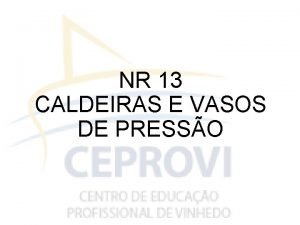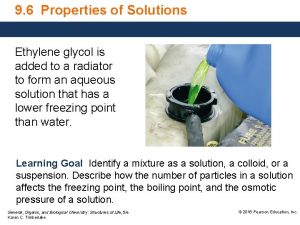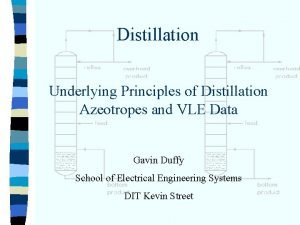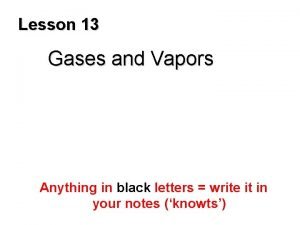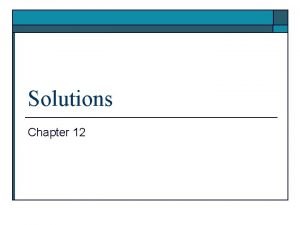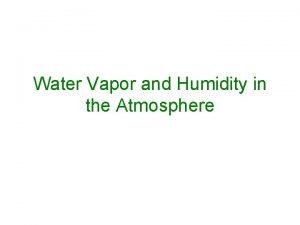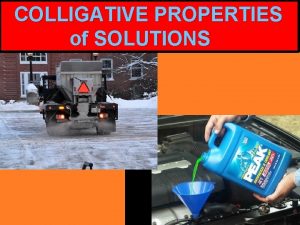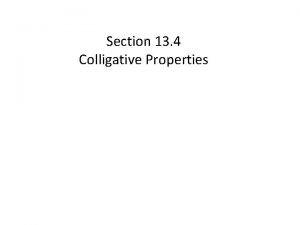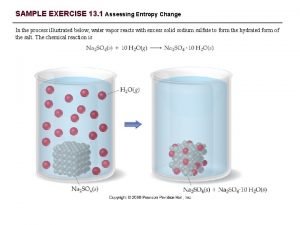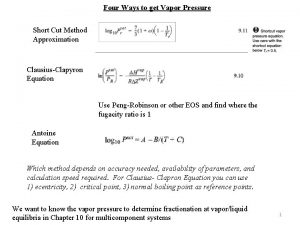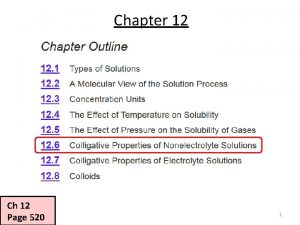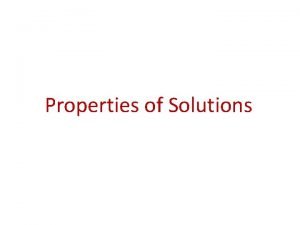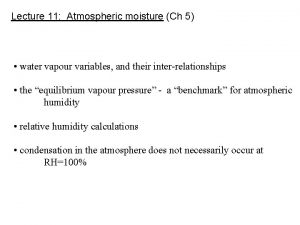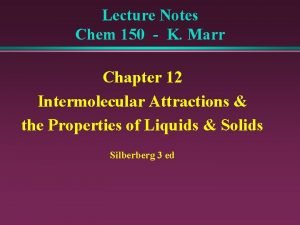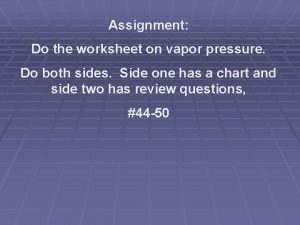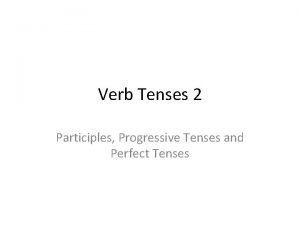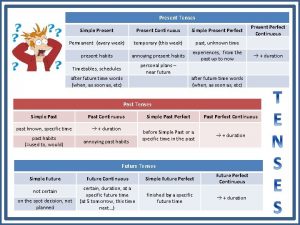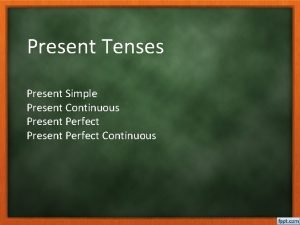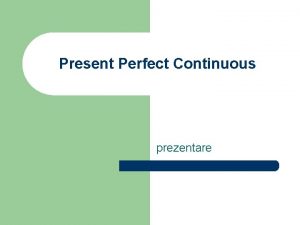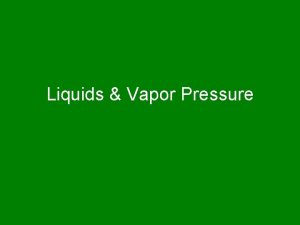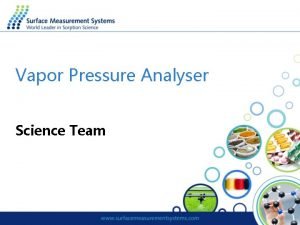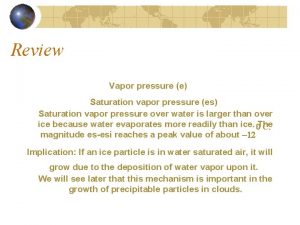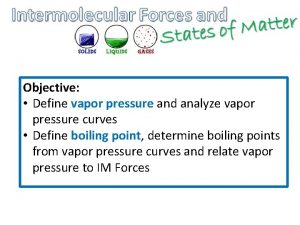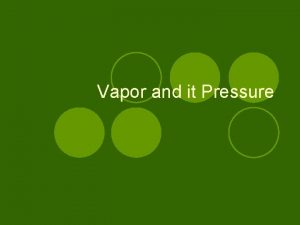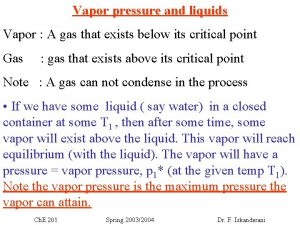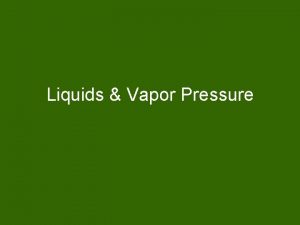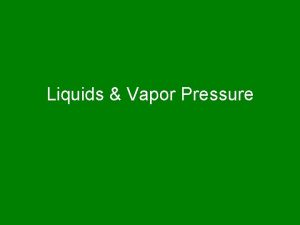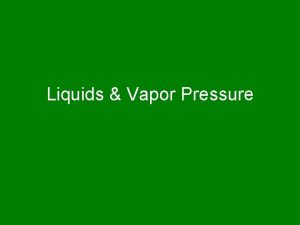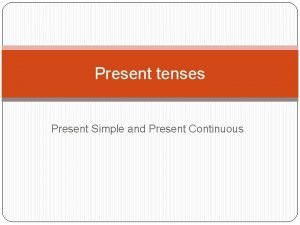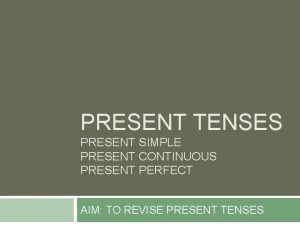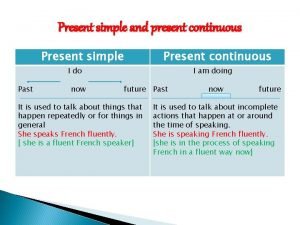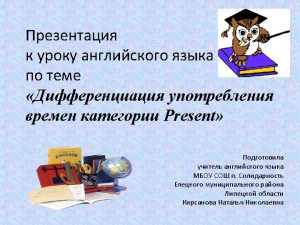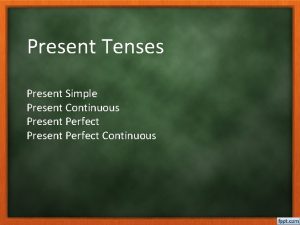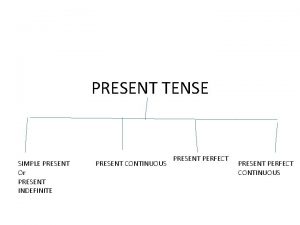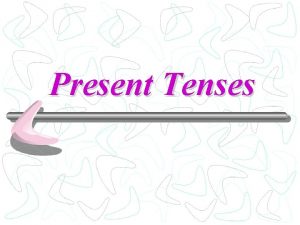Vapor Pressure Vapor Pressure of the vapor present




























- Slides: 28

Vapor Pressure

Vapor Pressure of the vapor present when equilibrium is achieved between the rate of vaporization and the rate of condensation. At the boiling point, the Patm = Pvapor As the vapor pressure on a pot of water is reduced, the energy needed to boil that water is also reduced. Pressure Cooker: By increasing the vapor pressure, additional energy is needed for the water to boil, therefore the water can boil at temperatures above 100 C.

Effect of Pressure on Boiling Point of Water at Various Location Feet above sea level Patm (k. Pa) Boiling Point ( C) Top of Mt. Everest, Tibet 29, 028 32 70 Top of Mt. Denali, Alaska 20, 320 45. 3 79 Top of Mt. Whitney, California 14, 494 57. 3 85 Leadville, Colorado 10, 150 68 89 Top of Mt. Washington, N. H. 6, 293 78. 6 93 Boulder, Colorado 5, 430 81. 3 94 900 97. 3 99 10 101. 3 100 -282 102. 6 100. 3 Madison, Wisconsin New York City, New York Death Valley, California

Vapor Pressure vs. Temperature As the temperature increases, a greater number of molecules have sufficient kinetic energy to convert from the liquid to the vapor phase. There is a nonlinear relationship between the vapor pressure of a liquid and temperature.

Vapor Pressure vs. Temperature

The Clausius – Clapeyron Equation • A mathematical expression which relates the variation of vapor pressure to temperature • ln P = (-DHvap/RT) + C where C is a constant • IMPORTANCE: • When the ln P is plotted vs (1/T) you create a line where the slope is equal to the –DHvap/R • Which means you can calculate the enthalpy of vaporization from the slope of the line. • R = 8. 314 J/Kmol Convert all Temps to Kelvin

Vapor Pressure of Solutions • A nonvolatile solute lowers the vapor pressure of the solution. • The molecules of the solvent must overcome the force of both the other solvent molecules and the solute molecules.

Raoult’s Law: • Psoln = csolvent x Psolvent • Vapor pressure of the solution = m ole fraction of solvent x vapor pressure of the pure solvent • Applies only to an ideal solution where the solute doesn’t contribute to the vapor pressure.

• Water has a higher vapor pressure than a solution Aqueous Solution Pure water

• Water evaporates faster from for water than solution Aqueous Solution Pure water

• The water condenses faster in the solution so it should all end up there. Aqueous Solution Pure water

Practice Problem • A solution of cyclopentane with a nonvolatile compound has vapor pressure of 211 torr. If vapor pressure of the pure liquid is 313 torr, what is the mole fraction of the cyclopentane? • Psoln = Xcp. Pcp • 211 torr = Xcp (313 torr) • . 674

Try one on your own • Determine the vapor pressure of a solution at 25 C that has 45 grams of C 6 H 12 O 6, glucose, dissolved in 72 grams of H 2 O. The vapor pressure of pure water at 25 C is 23. 8 torr. • Psolution= Xsolvent Psolvent • Psolution =. 941(23. 8 torr) • Psolution = 22. 4 torr

Ideal solutions • Liquid-liquid solutions where both are volatile. • Modify Raoult’s Law to c 0 c • Ptotal = PA + PB = APA + BPB • Ptotal = vapor pressure of mixture 0 • If this equation works then the solution is ideal.

Vapor Pressure of solution

Deviations • • If solvent has a strong affinity for solute (H bonding). Lowers solvent’s ability to escape. Lower vapor pressure than expected. Negative deviation from Raoult’s law. • DHsoln is large and negative exothermic. • Endothermic DHsoln indicates positive deviation.

Vapor Pressure Positive deviations. Weak attraction between solute and solvent Positive ΔHsoln χA χb

Vapor Pressure Negative deviations. Strong attraction between solute and solvent Negative ΔHsoln χA χb

Problem #1 • The vapor pressure of a solution containing 53. 6 g of glycerin C 3 H 8 O 3 in 133. 7 g ethanol C 2 H 5 OH is 113 torr at 40 C. Calculate the vapor pressure of pure ethanol at 40 C assuming that the glycerin is a non volatile, nonelectrolyte solute in ethanol.

Answer to #1 Psoln = Xeth Peth 113 torr = 2. 90 mol/3. 48 mol (Peth) 135. 6 torr = Peth

Problem #2 • At a certain temperature, the vapor pressure of pure benzene C 6 H 6 is 0. 930 atm. A solution was prepared by dissolving 10. 0 g of a nondissociating, nonvolatile solute in 78. 11 g of benzene at that temperature. The vapor pressure was found to be 0. 900 atm. Assuming the solution behave ideally, determine the molar mass of the solute.

Answer #2 Psoln = Xbenzene. Pbenzene. 900 atm = Xbenzene (. 930 atm) Xbenzene =. 9677 Xsolute =. 0323 MM = 10. 0 g/. 0323 mol = 310 g/mol

Problem #3 A solution of Na. Cl in water has a vapor pressure of 19. 6 torr at 25 C. What is the mol fraction of solute particle in this solution if the vapor pressure of water is 23. 8 torr at 25 C?

Answer #3 Psoln = Xwater. Pwater 19. 6 torr = Xwater(23. 8 torr). 824 = Xwater therefore Xsolute =. 176

Problem #3 For the same problem as #3: What is the vapor pressure of the solution at 45 C if the vapor pressure of water is 71. 9 torr at 45 C?

Answer #3 Psoln =. 824(71. 9 torr) Psoln = 59. 2 torr

Problem #4 A solution is made from 0. 0300 mol CH 2 Cl 2 and 0. 0500 mol CH 2 Br 2 at 25 C. Assuming that the solution is ideal, calculate the % composition of the vapor at 25 C. PCH 2 Cl 2 = 133 torr PCH 2 Br 2 = 11. 4 torr

Answer #4 Psoln = XCH 2 Cl 2 P + XCH 2 Br 2 P Psoln = (. 03/. 08)(133 torr) + (. 05/. 08)(11. 4 torr) Psoln = 57. 0 torr XCH 2 Cl 2 = 49. 9 / 57 =. 875 = 87. 5% XCH 2 Br 2 = 7. 13 / 57 =. 125 = 12. 5%
 Caldeira flamotubular
Caldeira flamotubular Vapor pressure lowering
Vapor pressure lowering Ethanol azeotrope
Ethanol azeotrope Vapor pressure
Vapor pressure Calculate the osmotic pressure of a solution
Calculate the osmotic pressure of a solution How to calculate vapor pressure of water
How to calculate vapor pressure of water The vapor pressure of pure water at 110 c is 1070 torr
The vapor pressure of pure water at 110 c is 1070 torr Why freezing point decreases on adding solute
Why freezing point decreases on adding solute Vapor pressure lowering
Vapor pressure lowering Glycerin vapor pressure
Glycerin vapor pressure Shortcut vapor pressure equation
Shortcut vapor pressure equation Freezing point chapter 12
Freezing point chapter 12 Vapor pressure lowering
Vapor pressure lowering Vapor pressure of water equation
Vapor pressure of water equation London dispersion forces
London dispersion forces Factors affecting vapor pressure
Factors affecting vapor pressure Vapor pressure and boiling worksheet answers
Vapor pressure and boiling worksheet answers Present simple present continuous and present perfect
Present simple present continuous and present perfect Relative clause noredink
Relative clause noredink Present perfect present simple present continuous
Present perfect present simple present continuous Present perfect simple and continuous
Present perfect simple and continuous Difference between present perfect simple and continuous
Difference between present perfect simple and continuous Present simple present continuous present perfect
Present simple present continuous present perfect Present simple schema
Present simple schema Thể thơ truyền thống
Thể thơ truyền thống Các châu lục và đại dương trên thế giới
Các châu lục và đại dương trên thế giới Từ ngữ thể hiện lòng nhân hậu
Từ ngữ thể hiện lòng nhân hậu Diễn thế sinh thái là
Diễn thế sinh thái là Vẽ hình chiếu vuông góc của vật thể sau
Vẽ hình chiếu vuông góc của vật thể sau
